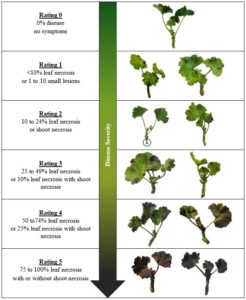Where Is Botrytis in Your Growth Operations?
go.ncsu.edu/readext?565956
en Español / em Português
El inglés es el idioma de control de esta página. En la medida en que haya algún conflicto entre la traducción al inglés y la traducción, el inglés prevalece.
Al hacer clic en el enlace de traducción se activa un servicio de traducción gratuito para convertir la página al español. Al igual que con cualquier traducción por Internet, la conversión no es sensible al contexto y puede que no traduzca el texto en su significado original. NC State Extension no garantiza la exactitud del texto traducido. Por favor, tenga en cuenta que algunas aplicaciones y/o servicios pueden no funcionar como se espera cuando se traducen.
Português
Inglês é o idioma de controle desta página. Na medida que haja algum conflito entre o texto original em Inglês e a tradução, o Inglês prevalece.
Ao clicar no link de tradução, um serviço gratuito de tradução será ativado para converter a página para o Português. Como em qualquer tradução pela internet, a conversão não é sensivel ao contexto e pode não ocorrer a tradução para o significado orginal. O serviço de Extensão da Carolina do Norte (NC State Extension) não garante a exatidão do texto traduzido. Por favor, observe que algumas funções ou serviços podem não funcionar como esperado após a tradução.
English
English is the controlling language of this page. To the extent there is any conflict between the English text and the translation, English controls.
Clicking on the translation link activates a free translation service to convert the page to Spanish. As with any Internet translation, the conversion is not context-sensitive and may not translate the text to its original meaning. NC State Extension does not guarantee the accuracy of the translated text. Please note that some applications and/or services may not function as expected when translated.
Collapse ▲Botrytis is one of the most common plant pests affecting greenhouses, nurseries, landscapes and food operations. The fungal pathogen causes grey mold and blight. It can attack and blight buds, flowers, fruit, leaves, and stems.
Why is Botrytis developing, despite having clean plants and growing spaces?
Plants become susceptible to disease when stressed, excess free water on stems and leaves, reduced air circulation and a susceptible cultivar. Taking measures to improve propagation and shipping methods will reduce incidents within your operations.
PhD student Nathan Jahnke and Dr. John Dole reported on recent research with the occurrence of Botrytis in geranium cuttings during shipping in an article that appeared in GrowerTalks (April 2018). This research within the Cut Flower and Postharvest Floriculture Program is an example of the group addressing one of the floriculture industry’s major concerns.



